
Key Takeaways:
-
Solar surface water pumps are cost-effective solutions for irrigation, reducing reliance on non-renewable energy.
-
Installation of solar pumps is straightforward and can be tailored to farm size and water needs.
-
Maintenance of solar pumps is minimal, making them suitable for remote and off-grid farming operations.
-
Long-term savings from solar pumps significantly outweigh initial costs, especially when considering subsidies and incentives.
-
Real-world examples demonstrate that solar pumps boost productivity and sustainability for farmers globally.
Harnessing the Sun’s Power for Farm Irrigation With a Solar Surface Water Pump
Imagine a farm where the only thing greener than the crops is the energy used to grow them. That’s the power of solar surface water pumps – a game-changer in sustainable agriculture. These pumps draw on the sun’s endless energy, offering a cost-effective and eco-friendly solution to irrigation. They’re not just good for the planet; they’re great for your wallet too, with long-term savings that make the initial investment a smart move. Plus, they’re a breeze to maintain. Let’s dive into how these high-efficiency systems are revolutionizing the way we farm.
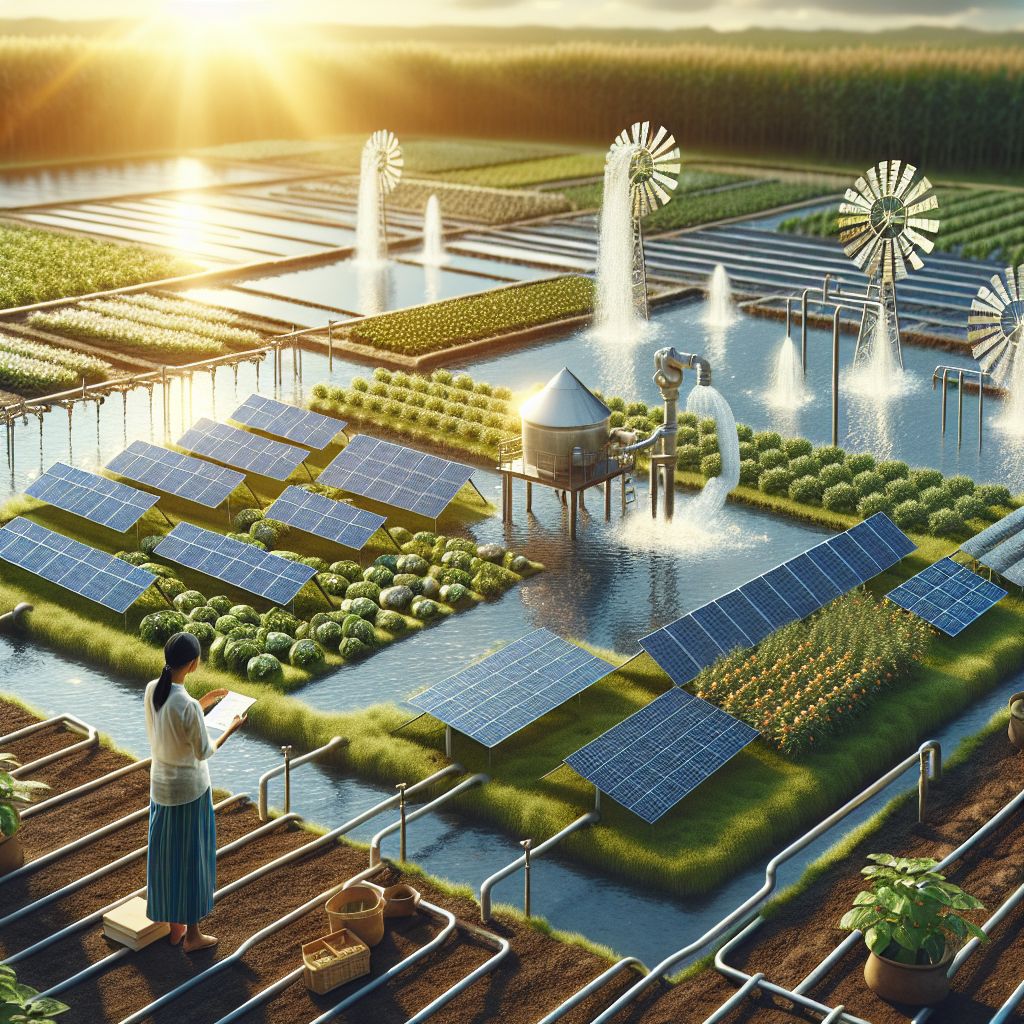
Soak Up the Sun: Optimal Irrigation Through Solar Power
Why go solar? Because it’s reliable, renewable, and ready to meet your farm’s needs. Solar surface water pumps operate by converting sunlight into electricity, powering a pump that brings water from sources like lakes, rivers, or ponds to your thirsty crops. And they do this without the hum of a diesel generator or the monthly shock of an electric bill. This sustainable solution is not only better for the environment but also boosts your farm’s resilience against fluctuating fuel prices and grid outages.
What Makes Solar Surface Pumps the Smart Choice for Farmers?
Let’s face it: farming is tough, and the costs of running a farm can be high. But solar surface water pumps are a bright spot in the agricultural landscape. They offer a slew of benefits that make them a no-brainer for any farmer looking to cut costs and increase efficiency. These pumps are designed for easy installation and can be scaled to fit any size farm, ensuring that whether you’re cultivating a small vegetable plot or acres of grain, there’s a solar solution that fits your needs.
Immediate Steps to Transition to Solar Irrigation
Ready to harness the sun’s power for your farm? Here’s what you need to do:
-
Assess your water requirements to determine the right pump size.
-
Choose a solar pump that matches your farm’s irrigation needs.
-
Install solar panels to power the pump – the number will depend on your energy needs.
-
Set up the pump system, complete with pipes and irrigation infrastructure.
-
Regularly monitor and maintain your system to keep it running smoothly.
With these steps, you’ll be well on your way to a more sustainable and cost-effective farming operation.
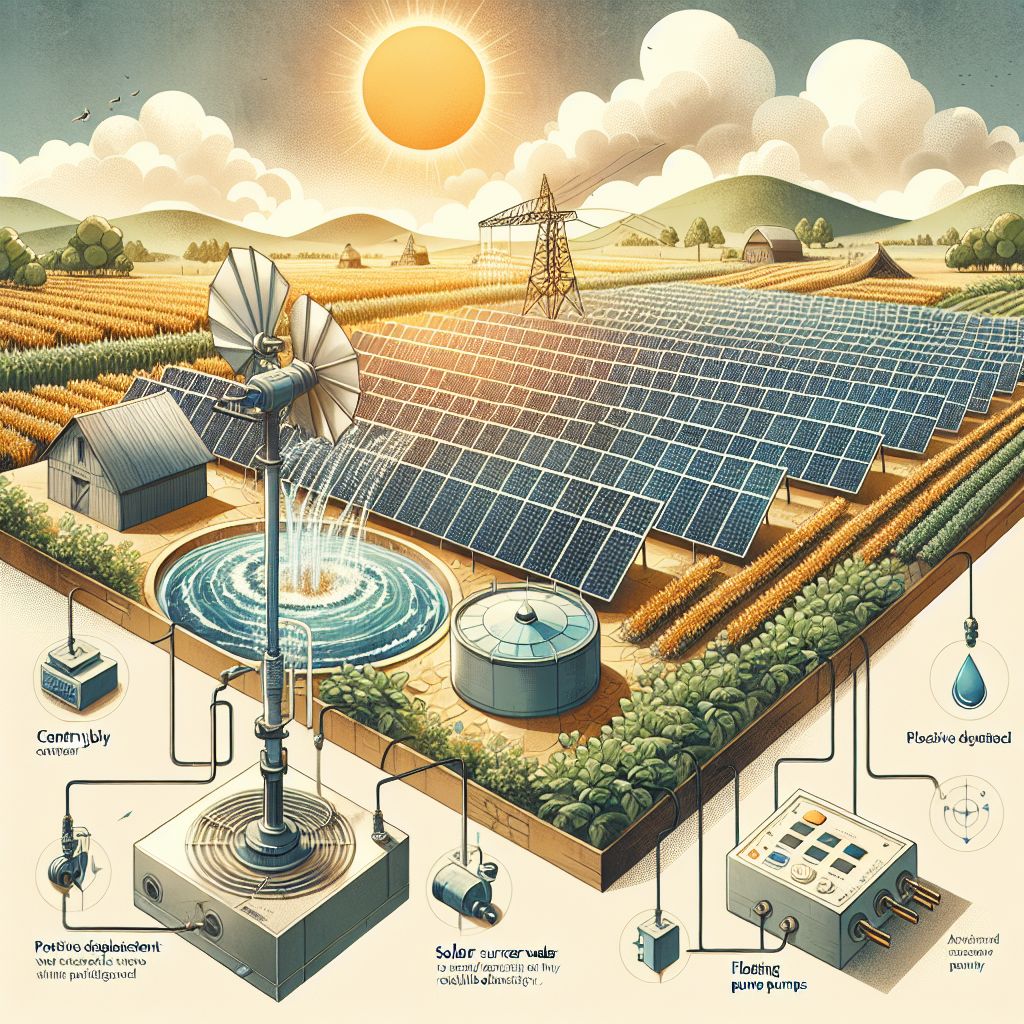
Understanding Solar Surface Water Pumps
Now, let’s get into the nuts and bolts of solar surface water pumps. These devices are marvels of modern engineering, designed to maximize efficiency and durability. They typically consist of a solar panel array, a controller, and the pump itself. The solar panels collect sunlight, the controller regulates the power, and the pump moves water to where it’s needed. The beauty of these systems lies in their simplicity: fewer moving parts mean less that can go wrong, which translates to reduced maintenance and repair costs.
Moreover, solar surface pumps have the flexibility to operate in various environments. They’re particularly well-suited for areas where electricity is unreliable or unavailable. By providing a consistent water supply, these pumps enable farmers to grow crops year-round, improving food security and increasing income potential.
Advantages of Using Solar Surface Water Pumps
When you opt for a solar surface water pump, you’re investing in a host of advantages. This below table summarizing the benefits for using solar surface water pumps for an irrigation system on a farm can be structured as follows:
| Benefit | Description |
| Reliability | Solar pumps rely on sunlight, providing a constant water source even when the power grid is down. 1, 2 |
| Sustainability | Solar pumps are sustainable, requiring minimal water resources and reducing water waste through efficient operation. 1 |
| Versatility | Solar pumps can be used for various tasks like irrigation, watering livestock, and spraying crops, offering a cost-effective solution. 1, 2 |
| Cost-Effectiveness | Solar-powered pumps are cost-effective, with lower operating costs compared to traditional pumps, making them ideal for small-scale farmers. 1, 2 |
| Environmentally Friendly | Solar pumps have no emissions and little to no carbon footprint, contributing to environmental sustainability. 1, 2 |
| Easy Maintenance | Solar water pumps are easier to maintain than other pump power sources, running for years without needing maintenance. 3 |
| Mobility | Solar water pump systems can be easily moved to different locations, providing flexibility for changing needs. 3 |
| Easy Installation | Solar surface water pumps are easy to install without the need for external power sources, reducing setup costs. 3 |
| Efficiency | Solar pump systems are highly efficient, powered by the sun and saving money while being eco-friendly. 3 |
These benefits highlight the advantages of utilizing solar surface water pumps for farm irrigation systems, emphasizing their reliability, sustainability, versatility, cost-effectiveness, environmental friendliness, ease of maintenance, mobility, easy installation, and efficiency.
The Mechanics Behind Solar Surface Water Pumping
Understanding how solar surface pumps work is crucial. These systems convert sunlight directly into electrical energy through photovoltaic cells in the solar panels. This energy is then used to power an electric motor that runs the pump. Because solar energy is most abundant during the sunniest part of the day – which coincides with peak irrigation times – solar pumps are incredibly efficient for daytime watering needs.
Different Types of Solar Surface Pumps
Not all solar pumps are created equal. There are different types to consider, each suited to specific situations:
| Type | Description |
| Centrifugal Pumps | Utilize a rotating impeller to move fluid through the pump, drawing the fluid in and expelling it through the discharge valve. Commonly used in agriculture, particularly for irrigation purposes. Ideal for moving water over large distances or for sprinkler systems. 2, 4 |
| Submersible Pumps | Installed below the water’s surface, typically in wells, lakes, or ponds. Known for high efficiency and reliability, making them suitable for various irrigation needs. 4, 5 |
| Fire Hydrant Systems | High-pressure pumps used in firefighting to increase water force within a building when mains supply is insufficient. Also serve irrigation and water distribution purposes on farms. 5 |
| Positive Displacement Pumps | Move fluids by enclosing a fixed volume and mechanically moving it through the system. Suitable for handling viscous fluids, complex feeds, and accurate dosing requirements in farm applications. Best for higher lift requirements, delivering a steady flow. 1, 5 |
| Floating Pumps | Utilize vanes or screws to transport fluid along the screw axis, similar to an Archimedes screw design. Ideal for irrigation purposes and can handle high pressures efficiently. Perfect for drawing water from ponds or lakes, these sit on the water’s surface. 1 |
These various types of surface pumps offer distinct features and benefits that cater to different aspects of farm irrigation, showcasing their efficiency, reliability, and suitability for diverse agricultural water supply needs. Choosing the right pump depends on factors like the source of water, the distance it needs to travel, and the elevation change. Getting this right is key to ensuring that your crops get the water they need, when they need it.

Calculating Savings: The Cost-Benefit Analysis
Let’s talk about the elephant in the room: cost. Sure, solar surface water pumps have an upfront price tag, but they’re like the tortoise in the race – slow and steady wins the financial race. Over time, the cost of running a solar pump is significantly lower than traditional pumps because you’re not paying for fuel or electricity. It’s like having a free energy source once you’ve covered the initial setup.
But how much can you really save? Well, it’s not just about the direct savings on energy. There are also indirect savings to consider, such as the reduced need for maintenance and the longer lifespan of solar pumps compared to conventional ones. Plus, many regions offer incentives or subsidies for renewable energy installations, which can further reduce your costs.
Think about it this way: every drop of water that you pump using solar power is a drop that you’re not paying for through your utility bill or at the fuel pump. And as the sun isn’t sending you a bill, those savings start to add up quickly. This is especially true in sunny regions where solar pumps can operate at maximum capacity.
-
Solar pumps can eliminate fuel and electricity costs associated with traditional pumps.
-
Indirect savings from reduced maintenance needs and longer equipment lifespan add up.
-
Subsidies and incentives for renewable energy can further reduce initial investment costs.
-
Regions with abundant sunshine maximize the capacity and cost-effectiveness of solar pumps.
Long-Term Benefits Over Upfront Expenses for Using Solar Surface Water Pumps
When you’re looking at the long game, solar surface water pumps are the MVPs. The initial expenses include the cost of the pump, solar panels, controllers, and installation. But once they’re up and running, the operational costs drop to nearly zero. This is because the fuel – sunlight – is free and abundant. Moreover, solar equipment typically requires less maintenance, and the systems are known for their durability, often lasting for decades with proper care.
Estimating the Break-Even Point for Your Investment
So, when do the scales tip in your favor? The break-even point varies depending on several factors, such as the cost of the system, the cost of water in your area, and any financial incentives you receive. However, most farmers find that their solar pump systems pay for themselves within a few years. After that, it’s all about reaping the benefits of free solar energy.
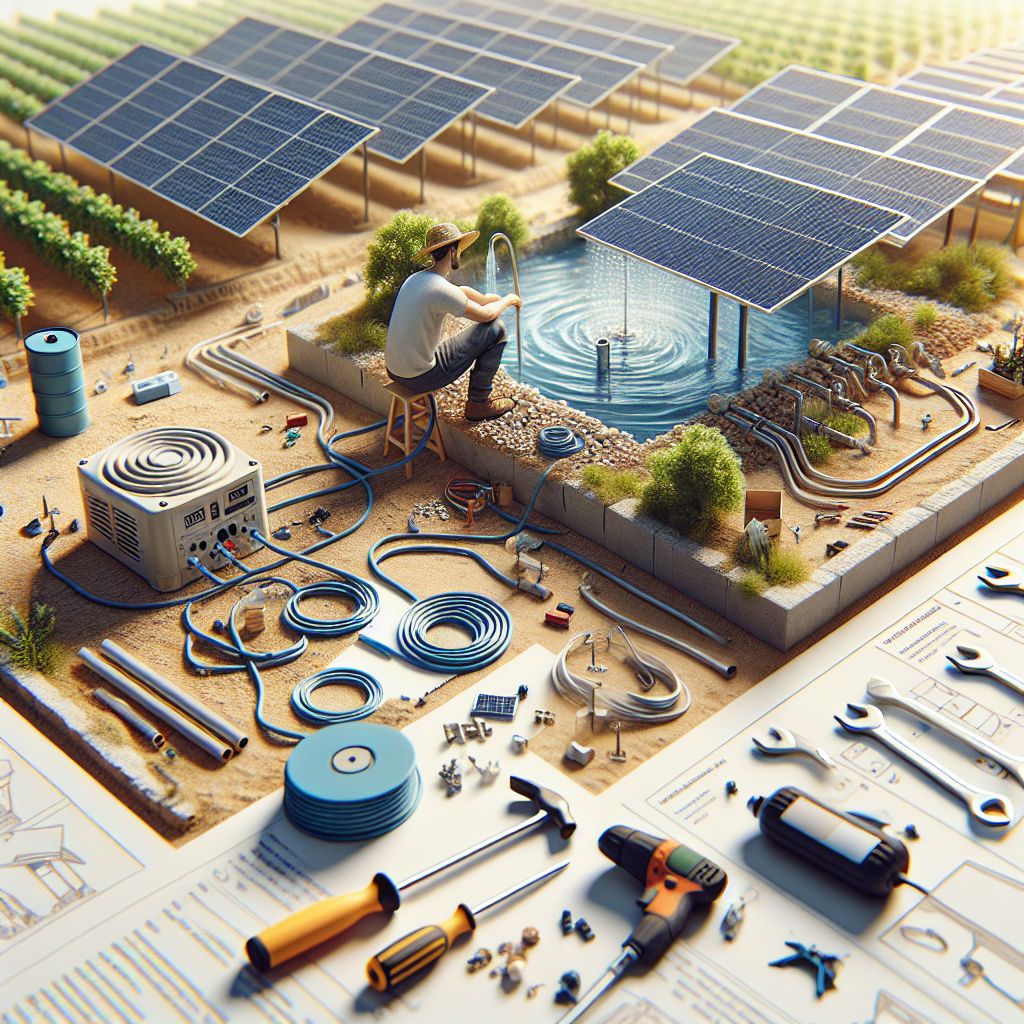
Installation Insights: Setting Up Your Solar Surface Pump
Rolling up your sleeves and installing a solar surface water pump is less daunting than you might think. The key is to plan your setup carefully. You’ll need to consider the location of your solar panels – they should be in a spot that gets plenty of sunlight and is close to both the water source and the areas you want to irrigate. You’ll also need to think about the size of the pump and the volume of water you need to move daily.
But don’t worry, you don’t need to be an engineer to get your system up and running. Many suppliers offer kits that include everything you need, along with instructions that are easy to follow. And if you’re not the DIY type, there are plenty of professionals who can handle the installation for you.
Essential Components and Tools Needed
Here’s what you’ll need to get your hands on for a successful installation: consider reviewing the different types of solar water pumps to determine which is best for your system.
-
Solar panels to capture the sun’s energy.
-
A solar pump controller to regulate the system.
-
The pump itself, which will move the water.
-
Piping and wiring to connect everything.
-
Mounting hardware to secure your panels.
-
Basic tools for assembly – think wrenches, screwdrivers, and drills.
Most importantly, make sure you have a clear instruction manual or guide. A good set of instructions is like a treasure map – it leads you right to the prize without any unnecessary detours.
DIY Versus Professional Installation: Pros and Cons
Going the DIY route can save you money on labor, and it’s a great way to get to know your system inside out. But it does require time, patience, and a certain level of skill. On the other hand, hiring a professional might cost more, but it ensures that your system is set up correctly and efficiently. Plus, professionals can often help you navigate the paperwork for any incentives or rebates, which can be a headache to handle on your own.
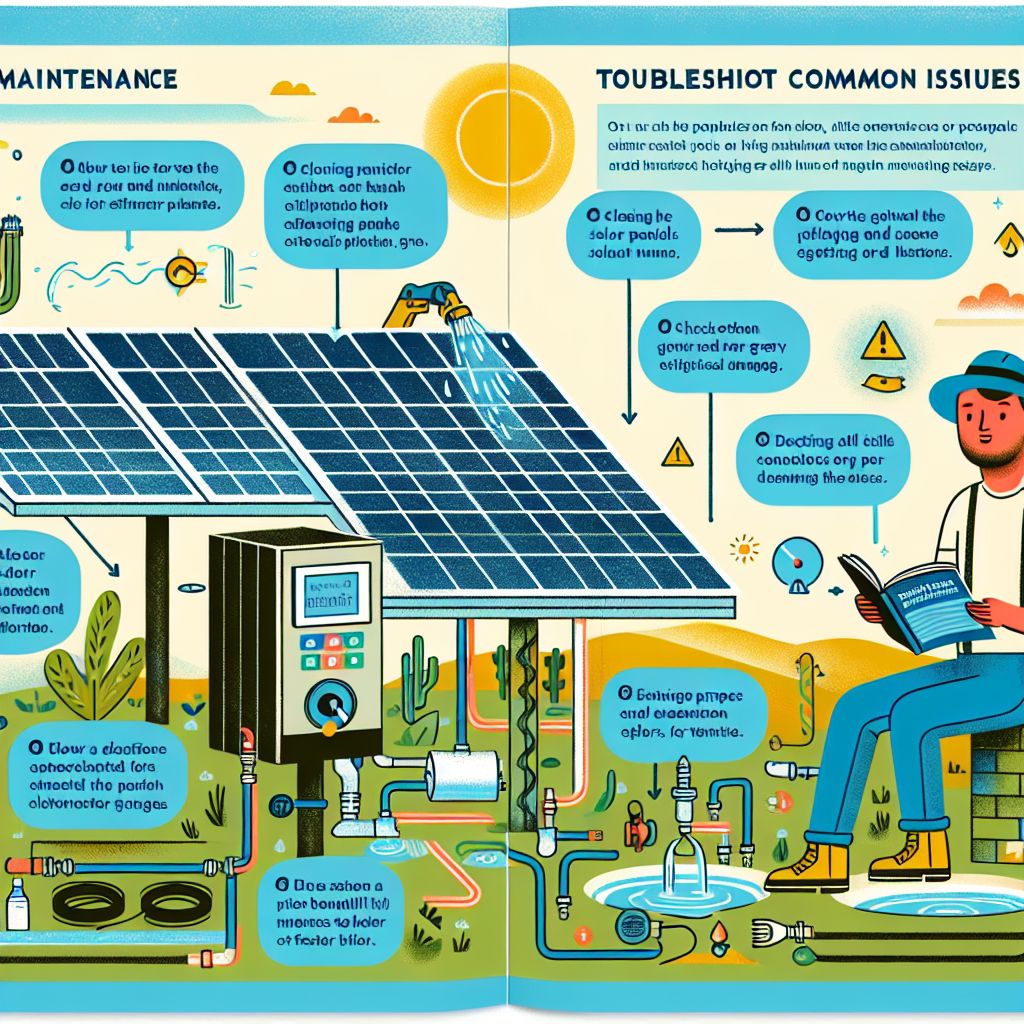
Maintenance 101: Keeping Your Pump in Top Shape
Maintenance for solar surface water pumps is pretty straightforward. These systems are built to last, but like any equipment, they perform best with some TLC. Regular check-ups will help you catch any potential issues before they become big problems, ensuring your pump keeps running smoothly for years to come.
Regular Check-Ups for Sustained Efficiency
Here’s a simple maintenance routine to keep your solar pump in top condition:
-
Keep solar panels clean – dust and debris can reduce their efficiency.
-
Check the pump and controller for any signs of wear or damage.
-
Ensure all electrical connections are tight and free of corrosion.
-
Inspect pipes and hoses for leaks or blockages.
Remember, a little maintenance goes a long way in extending the life of your system and maintaining its efficiency.
Troubleshooting Common Issues
Even the best systems can run into hiccups. If your pump isn’t working as it should, check the following:
-
Are the solar panels getting enough light? Shadows or overcast skies can reduce their output.
-
Is there any damage to the panels or wiring? Physical damage can prevent the system from functioning properly.
-
Is the pump or controller showing any error messages? Refer to your manual to decode what they mean.
-
Are the filters clean? Clogged filters can restrict water flow.
Most issues can be resolved with a bit of troubleshooting, but if you’re stumped, don’t hesitate to call in a professional.
Real-Life Success: Stories of Solar Pump Triumphs
Across the globe, farmers are seeing the light – literally. Those who’ve made the switch to solar pumps are not just saving money; they’re also enjoying a more reliable water supply, which leads to better crop yields and a healthier bottom line. Let’s look at a couple of real-life examples:
Small-Scale Farmers Reaping Big Rewards
Consider Maria, a vegetable farmer in Honduras. She installed a small solar pump to water her crops and saw her yields – and her income – increase dramatically. With the money she saved on fuel and maintenance, she was able to invest in more seeds and expand her farm. It’s a classic win-win: her business is thriving, and she’s doing her part for the planet.
Large-Scale Operations Achieving Sustainability Goals
Then there’s the story of a large vineyard in California that switched to solar pumps. The owners were able to cut their water-related energy costs by half while also reducing their carbon footprint. Their commitment to sustainability has not only improved their bottom line but also attracted eco-conscious consumers, proving that green practices can be good for business as well as the environment.
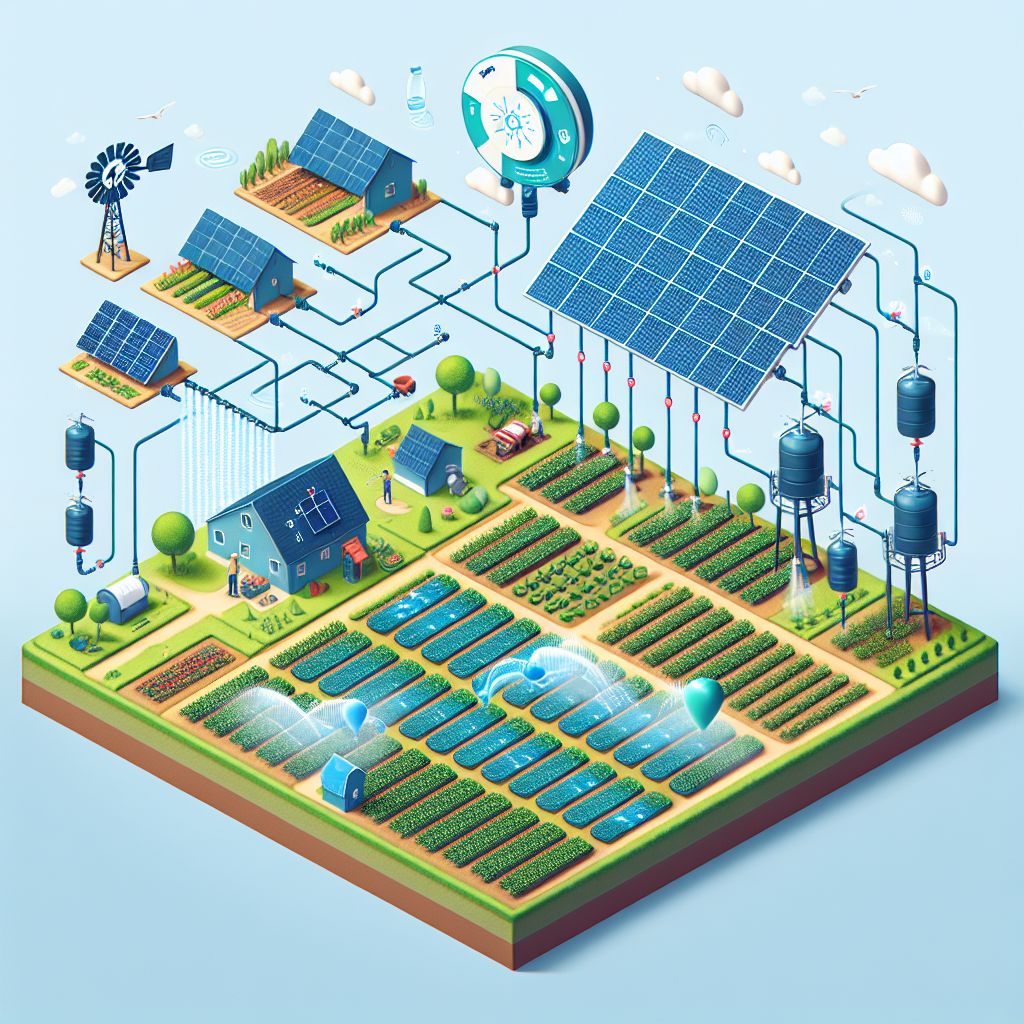
Scale Your Solar: Expansion Tips for Growing Farms
As your farm grows, so can your solar pump system. Adding more panels and upgrading your pump can help you meet increased water demands. And with smart technology, you can even automate your irrigation system for maximum efficiency. By scaling your solar setup, you ensure that your farm remains sustainable and productive, no matter how big it gets.
Adjusting Your Setup as Your Farm Flourishes
When your farm expands, your irrigation needs evolve. You may need to move more water or irrigate larger areas. The beauty of solar is its scalability. You can start small and add more panels and pumps as needed. This modular nature ensures that your irrigation system can grow in tandem with your farm.
Consider your future needs when planning your initial setup. It’s much easier to expand a system that was designed with growth in mind than to retrofit one that wasn’t. Think about the potential layout of new crop areas and plan your water delivery routes to accommodate expansion.
Smart Tech Integration for Automated Efficiency
Today’s technology allows for incredible automation capabilities. By integrating smart controllers into your solar irrigation system, you can optimize water usage based on real-time data, such as soil moisture levels and weather forecasts. This not only saves water but also ensures that your crops get exactly what they need, when they need it.
Smart tech can also alert you to any issues in the system, allowing you to address them promptly. This proactive approach to maintenance can prevent small issues from becoming big problems, saving you time and money in the long run.
FAQs About Solar Water Pumps in Agriculture
Can Solar Pumps Handle My Farm’s Water Demands?
-
Yes, solar pumps come in various sizes and can be designed to meet the specific water demands of your farm.
-
For larger operations, multiple pumps can be linked together to provide the necessary water flow.
-
Assess your water needs carefully and consult with a solar pump provider to ensure you get a system that meets your requirements.
Understanding your farm’s water requirements is crucial in choosing the right solar pump system. A well-designed solar pump can handle the water demands of both small and large-scale farming operations.
What Happens to Solar Pumps in Cloudy Weather?
Solar pumps are designed to store energy in batteries, ensuring that they can operate even when it’s cloudy. While the efficiency might decrease on overcast days, most systems are equipped to handle this with minimal disruption.
Is Financial Assistance Available for Solar Pump Installation?
Many governments and organizations offer grants, subsidies, or low-interest loans to encourage the adoption of renewable energy technologies, including solar pumps. Check with your local agricultural extension office or renewable energy agency to see what assistance may be available in your area.
How Does Solar Irrigation Impact the Environment?
Solar irrigation has a positive impact on the environment. It reduces greenhouse gas emissions by replacing diesel or grid-powered pumps with clean solar energy. This not only helps combat climate change but also reduces air and water pollution associated with fossil fuel use.
Are There Tax Incentives for Using Solar Irrigation Systems?
Many regions offer tax incentives for the installation of renewable energy systems, including solar irrigation pumps. These can take the form of tax credits, deductions, or accelerated depreciation. Consult with a tax professional to understand the incentives available to you.
Conclusion: Are Solar Surface Water Pumps a Good Investment for a Farmer?
In summary, solar surface water pumps are a stellar investment for farmers. They provide a sustainable and cost-effective solution to irrigation, reducing reliance on unpredictable energy sources and cutting operational costs. With the ability to scale the system as your farm grows and the potential for automation, solar pumps offer a future-proof solution for your agricultural needs.






